Trying to keep track of recipes from TikTok, Pinterest, or random food blogs can get messy fast. Instead of juggling bookmarks, screenshots, and saved posts, recipe-saving apps make it easier to collect everything in one place. These tools help you save recipes from across the web, sort them neatly, and even turn them into shopping lists or meal plans. Here’s a look at some of the most useful options available now.

1. ReciMe
At ReciMe, we built our app to make it easier to keep track of recipes from all the places people actually find them – Instagram, TikTok, Pinterest, Facebook, YouTube and notes. Whether it’s a saved post, a video from your feed, or an old family recipe, ReciMe helps you store everything in one organized space.
The app includes a smart grocery list that automatically sorts ingredients by recipe or by supermarket aisle, and a meal planner to map out your week. You can also build custom cookbooks to group recipes by theme or occasion. All of these features are available in the free version of the app.
You can access ReciMe through the web or save recipes directly using our Chrome extension. The app is also available on iOS. An Android version is currently in development, and users can join the waitlist for early access.
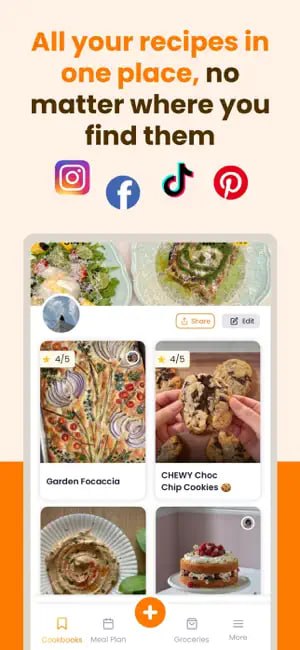
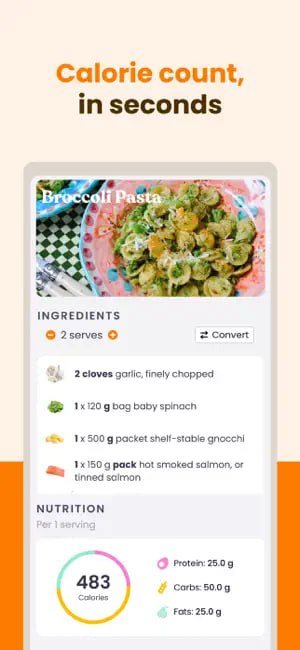
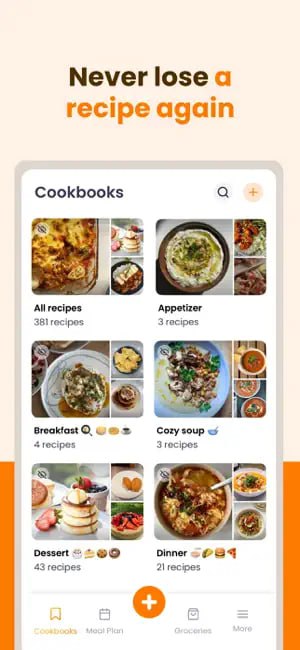
Key Highlights:
- Save recipes from Instagram, TikTok, Pinterest, Facebook, YouTube
- Built-in meal planner and customizable cookbooks
- Free version includes all core features (with a limit on recipe saves) for 7 days
- Available on iOS, with web access and Chrome extension support
- Android version in development (waitlist open)
- Active community on Instagram and Facebook
Who it’s best for:
- People who collect recipes from social media and want a central place to store them
- Home cooks looking for a way to organize meals and grocery shopping
- iOS users who want a dedicated app for recipe saving and planning
- Users who prefer a web and browser-based experience with Chrome support
- Android users who want early access through the waitlist
Contact Information:
- Website: www.recime.app
- App store: apps.apple.com/us/app/recime-recipes-meal-planner
- Google Play: play.google.com/store/apps/details
- Address: Suite 12/3 Albert Coates Ln, Melbourne VIC 3000, Australia
- Instagram: www.instagram.com/recime.app
- LinkedIn: www.linkedin.com/company/recimeapp
- Facebook: www.facebook.com/recimeapp
Just try it – you’ll love it:



2. Samsung Food
Samsung Food is an all-in-one recipe management app designed to help users collect, organize, and use their favorite recipes in a single place. With the ability to save recipes from any website into a personal digital recipe box, the app makes it simple to keep cooking inspiration easily accessible. Samsung Food supports not only recipe saving but also meal planning and grocery shopping, making it a practical choice for everyday use in the kitchen.
Users can turn saved recipes into weekly meal plans using a drag-and-drop planner, helping streamline preparation and reduce food waste. Additionally, Samsung Food can automatically generate smart shopping lists from individual recipes or full meal plans. The app also provides detailed nutritional information and calorie estimates for all saved recipes, including custom creations.
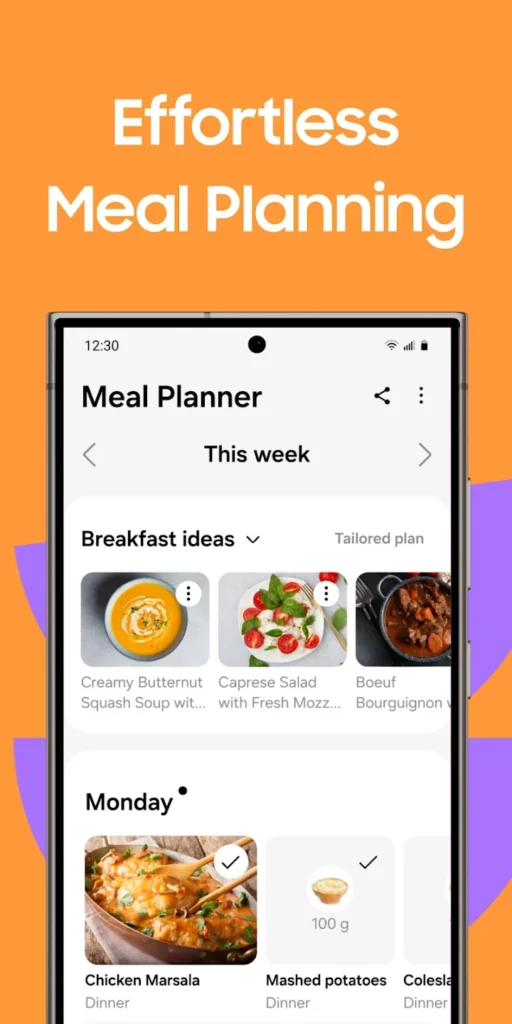
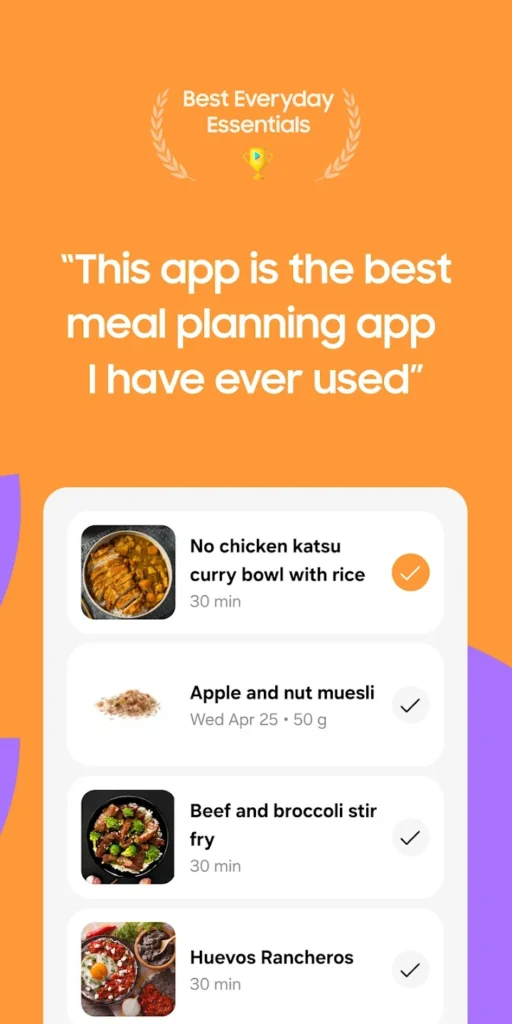
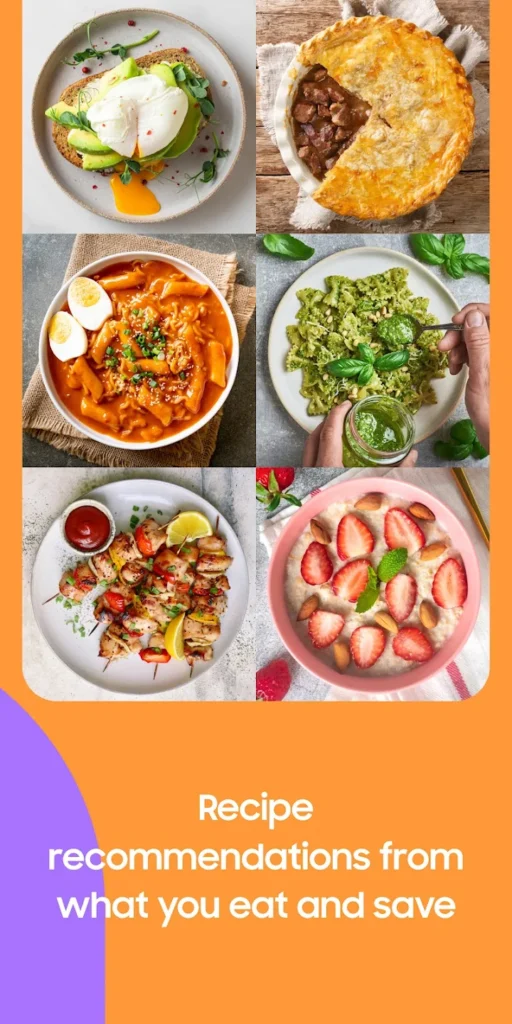
Key Highlights:
- Save recipes from external websites to a personal collection
- Option to arrange saved recipes into meal schedules
- Tools for generating grocery lists from selected recipes
- Nutrition and calorie data shown for saved meals
- Recipe collections organized by community preferences
- Available as a mobile app, web app, and browser extension
Who it’s best for:
- Users who gather recipes from various online sources
- Those who organize meals over a period of time
- People who track basic nutritional information in meals
- Users interested in exploring food content shared by others
Contact Information:
- Google Play: play.google.com/store/apps
- App Store: apps.apple.com/us/app/samsung-food-meal-planning
- Website: samsungfood.com
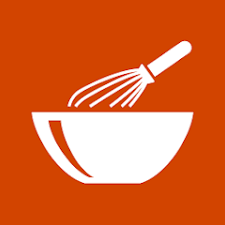
3. Recipe Keeper
Recipe Keeper is a multi-platform app designed to store and organize personal recipe collections. It allows users to input their own recipes, import them from websites, or add them by scanning cookbooks, handwritten notes, or printed pages. The app supports categorization by course and type, and includes options to add photos, ratings, and custom notes to each recipe. Recipes can be searched by name, ingredient, or instructions, and browsed using filters like category or rating.
Additional features include a shopping list builder, which can be generated from selected recipes and grouped by store aisle, and a meal planner that works on both a weekly and monthly basis. Recipe Keeper syncs across iPhone, iPad, Android devices, Windows PC, and Mac, and supports hands-free cooking using Amazon Alexa. The app also enables sharing via email or social media platforms, and offers a tool for creating printable or digital cookbooks.
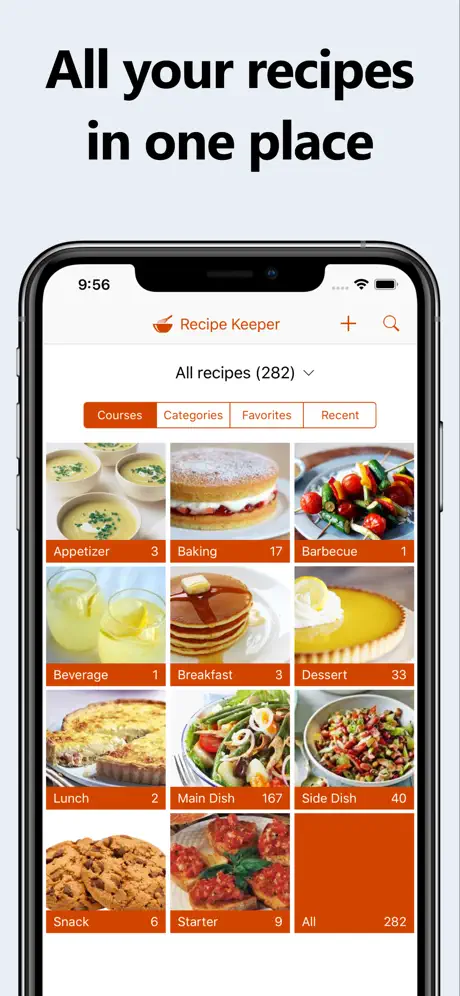
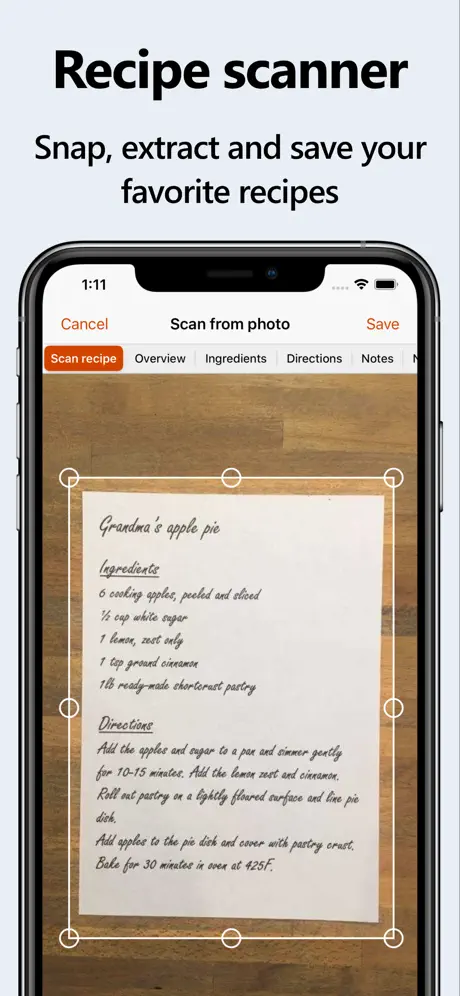
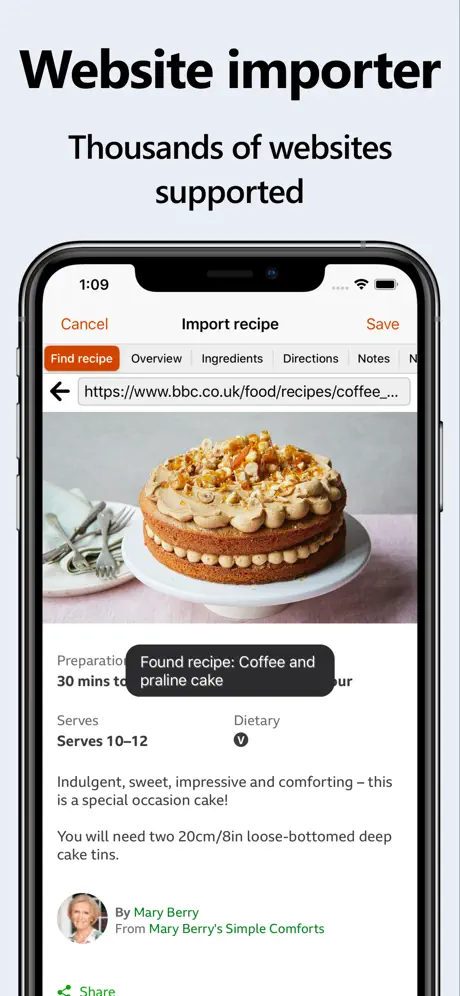
Key Highlights:
- Import recipes from websites or scan from photos and PDFs
- Organize recipes with custom categories, ratings, and images
- Sync across iOS, Android, PC, and Mac
- Built-in shopping list and meal planner
- Supports Alexa for voice-guided cooking
- Create and export custom cookbooks
Who it’s best for:
- Users who want to keep recipes from various sources, including scanned documents
- People using multiple devices across different platforms
- Those who cook with family recipes or handwritten notes
- Individuals looking to plan meals and generate grocery lists
- Users interested in creating printable cookbooks from personal collections
Contact Information:
- Website: recipekeeperonline.com
- App store: apps.apple.com/us/app/recipe-keeper
- Google Play: apps.apple.com/us/app/recipe-keeper
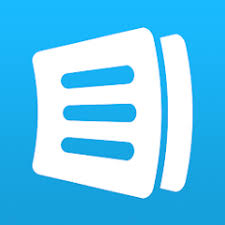
4. AnyList
AnyList is an app that combines grocery list creation with recipe organization and meal planning. It allows users to collect recipes from websites and emails, organize them within the app, and add ingredients directly to shopping lists. Recipes and lists can be accessed from iOS devices, Macs, and PCs, with data synced across platforms. Lists are automatically categorized by item type to streamline shopping and can be shared with others for collaborative use.
The app includes a meal planning calendar, enabling users to schedule meals by day or week and generate shopping lists based on selected recipes. Additional tools include item photo uploads, list folders, and visual customization options. AnyList also integrates with Siri for voice input and supports recipe saving through browser extensions on supported devices.
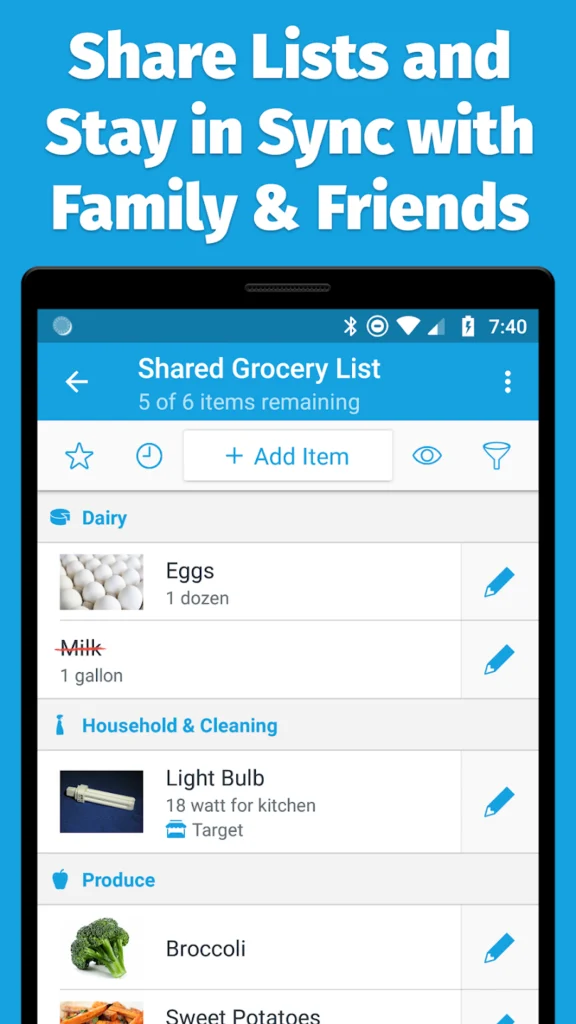
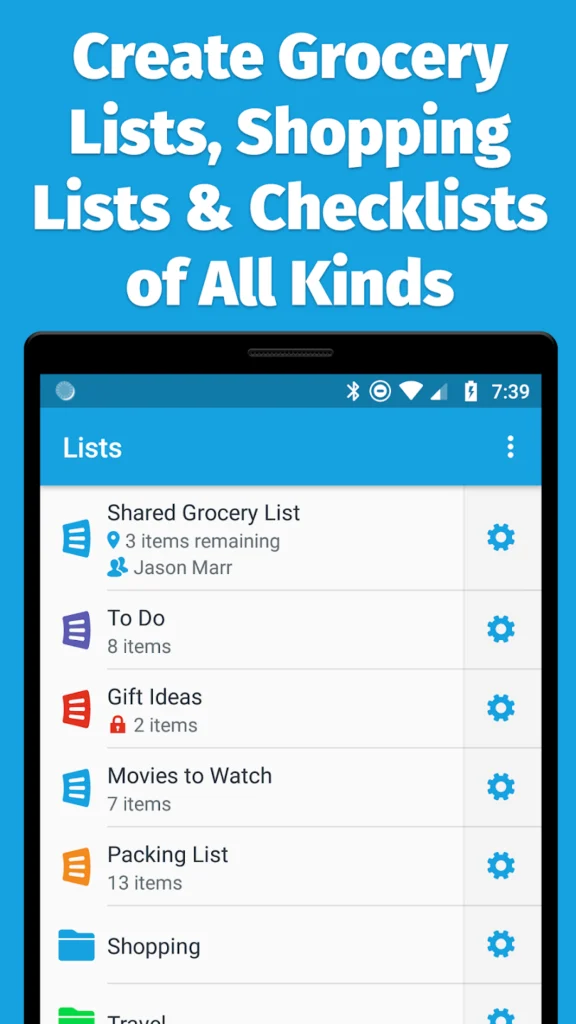

Key Highlights:
- Save recipes from websites and emails
- Add ingredients from recipes to categorized shopping lists
- Meal planning calendar for weekly or monthly use
- Syncs across iPhone, iPad, Mac, PC, and web
- Share lists with others in real-time
- Siri integration for voice input
Who it’s best for:
- Users managing both recipes and grocery lists in one app
- People who shop collaboratively with family or household members
- Cooks who prefer planning meals ahead of time
- Those using multiple platforms (mobile and desktop)
- Users looking for browser-based recipe saving
Contact Information:
- Website: www.anylist.com
- App store: geo.itunes.apple.com/us/app/anylist-grocery-shopping-list
- Google Play: play.google.com/store/apps
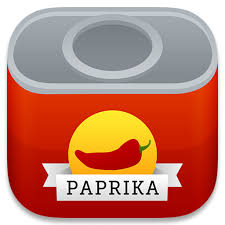
5. Paprika
Paprika is a recipe management application available for iOS, Android, Mac, and Windows. It includes a built-in web browser that allows users to save recipes from online sources directly into the app. Recipes can be organized into categories, edited for formatting, and supplemented with images. The app also includes features for displaying recipes in a format suited for use during cooking, with functions such as ingredient check-offs and step highlighting.
Paprika supports grocery list creation, automatically grouping items by store section and consolidating duplicate ingredients. It also includes a meal planner that allows for weekly and monthly scheduling. Additional tools include timers, ingredient scaling, unit conversion, and the ability to pin multiple recipes while cooking.
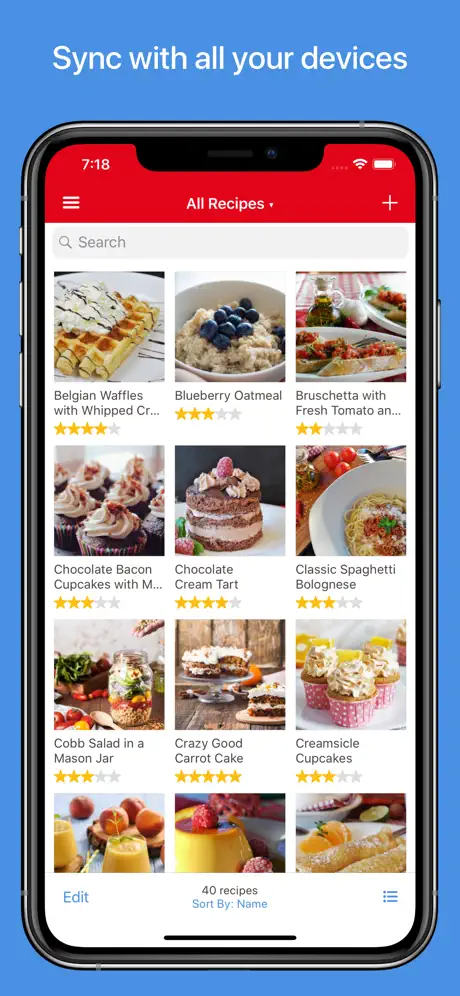
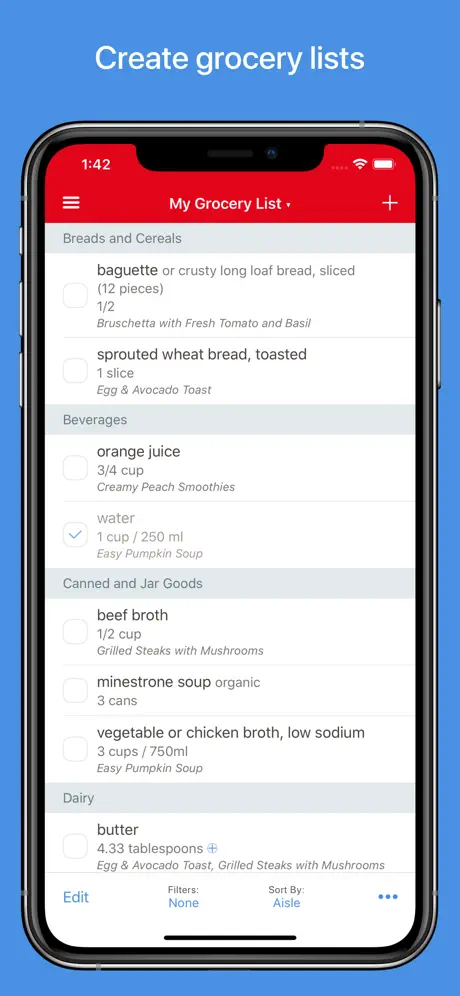
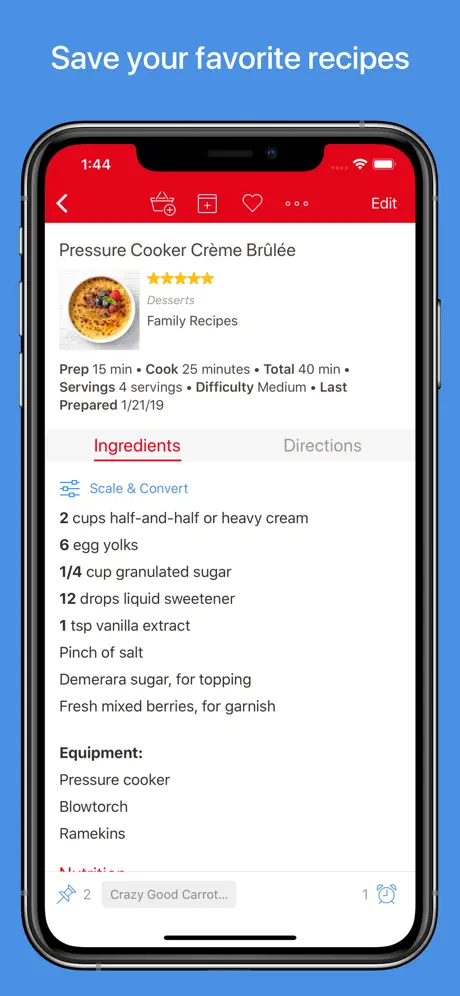
Key Highlights:
- Save recipes using a built-in web browser
- Supports recipe organization with categories and editing tools
- Grocery lists with auto-grouping and merging
- Calendar-based meal planning
- Cloud syncing across iOS, Android, Mac, and Windows
- Platform-specific purchases required
Who it’s best for:
- Users who want to save recipes from websites
- Individuals managing meal schedules and shopping lists
- People using multiple platforms for cooking and planning
- Those who prefer structured formatting and cooking tools
Contact Information:
- App store: apps.apple.com/us/app/paprika-recipe-manager-3
- Google Play: play.google.com/store/apps
- Website: www.paprikaapp.com
- Twitter: x.com/intent
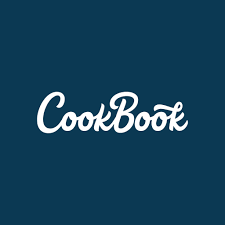
6. CookBook
CookBook is a recipe management app that works across multiple devices and platforms, including iOS, Android, and web browsers. Users can add recipes manually, import them from web links, or use OCR (optical character recognition) to scan and convert photos of physical recipes into digital format. Recipes can be stored, grouped, and customized within the app.
The app also offers tools for organizing recipes by categories, planning meals over various timeframes, and creating shopping lists based on selected recipes. Lists can be adjusted, saved, and accessed across devices. CookBook supports browser extensions for Chrome and Safari and provides access to the web version through a browser login. A free version of the app allows for a limited number of saved recipes and scans.
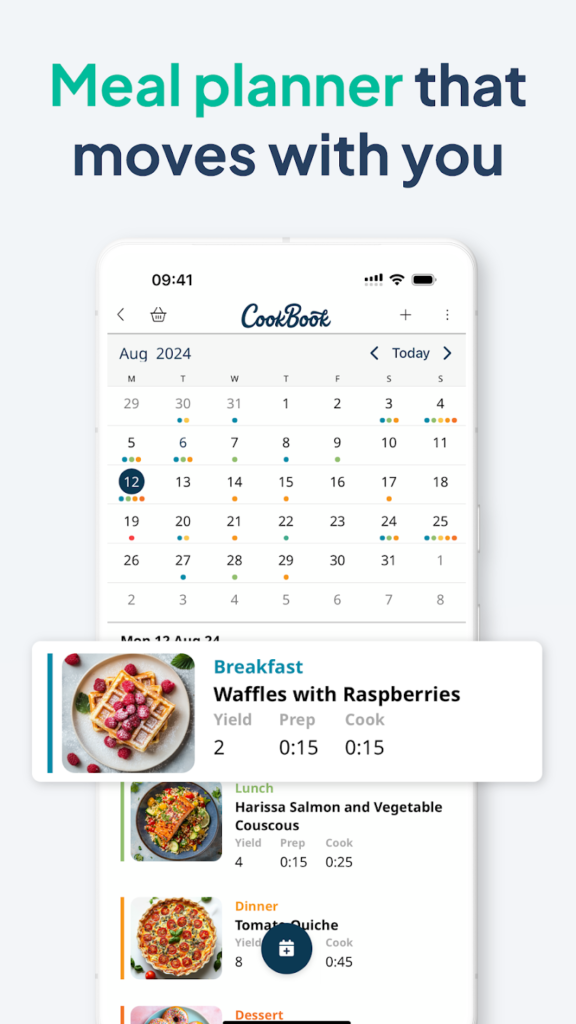
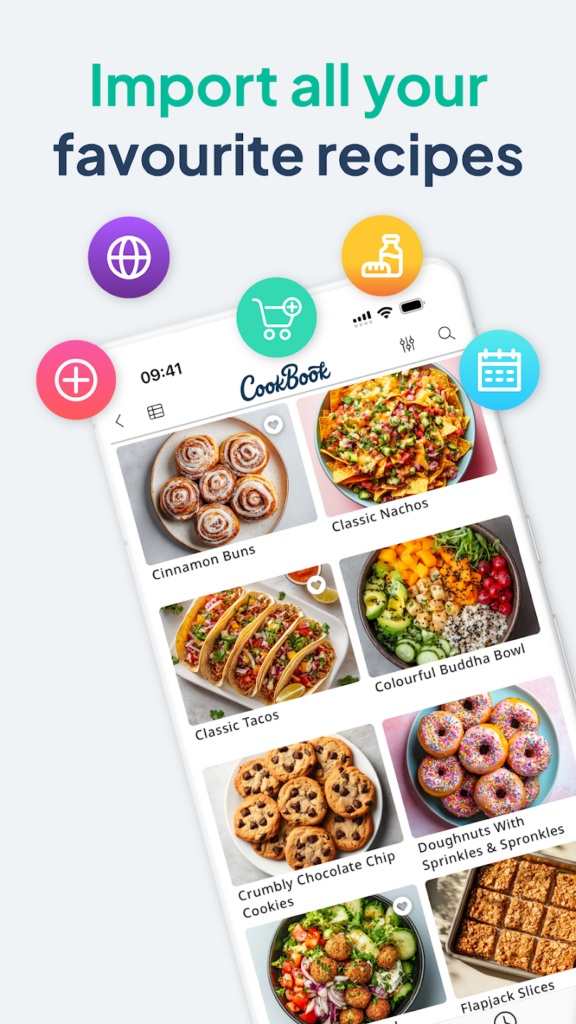
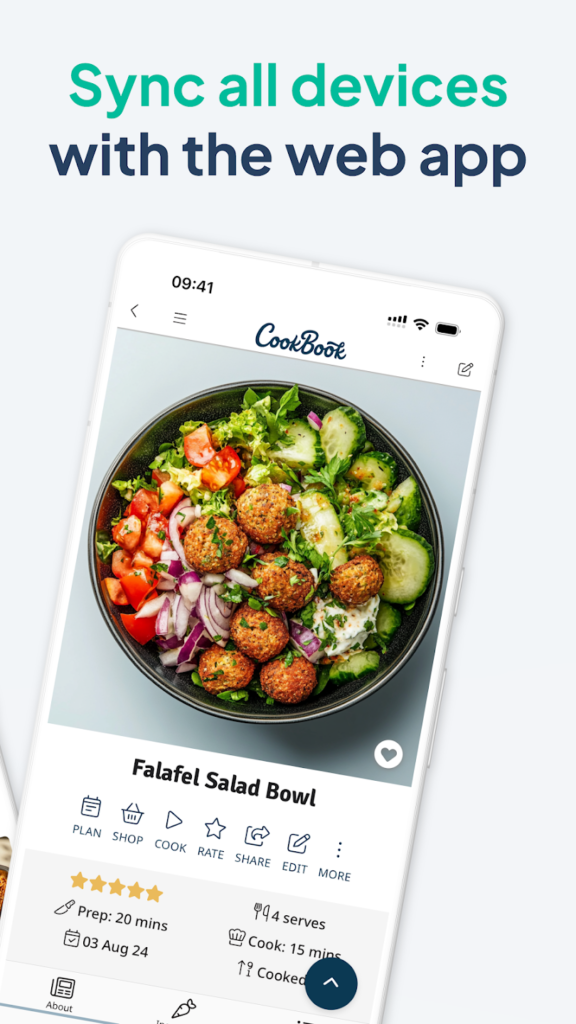
Key Highlights:
- Import recipes from websites or scan handwritten/printed ones using OCR
- Organize and categorize recipes with sorting and search filters
- Available on mobile apps and web, with Chrome and Safari extensions
- Meal planner with daily, weekly, and monthly views
- Shopping list features with ingredient merging and list export
Who it’s best for:
- Users looking to save and digitize recipes from various sources
- Those planning meals and grocery lists in one app
- People who use both mobile and desktop platforms for cooking
- Individuals who prefer web-based and multi-device access
- Users who need basic features with optional upgrade potential
Contact Information:
- App store: apps.apple.com/au/app/cookbook-the-recipe-manager
- Google Play: play.google.com/store/apps
- Website: cookbookmanager.com

7. RecipeSage
RecipeSage is a recipe management tool available on the web, iOS, and Android. It supports saving recipes by entering a URL from any website and allows users to organize recipes with tags and categories. Data syncs across devices, and users can search their saved recipes using a flexible search tool that accounts for spelling variations and similar terms.
The app includes features for meal planning and shopping list creation. Meal plans can be built using a drag-and-drop interface, and shopping lists are automatically categorized and grouped by similar items. RecipeSage also enables recipe sharing, supports data imports from other apps, and offers export options for backups. The app is open source and operates on a donation-supported model.

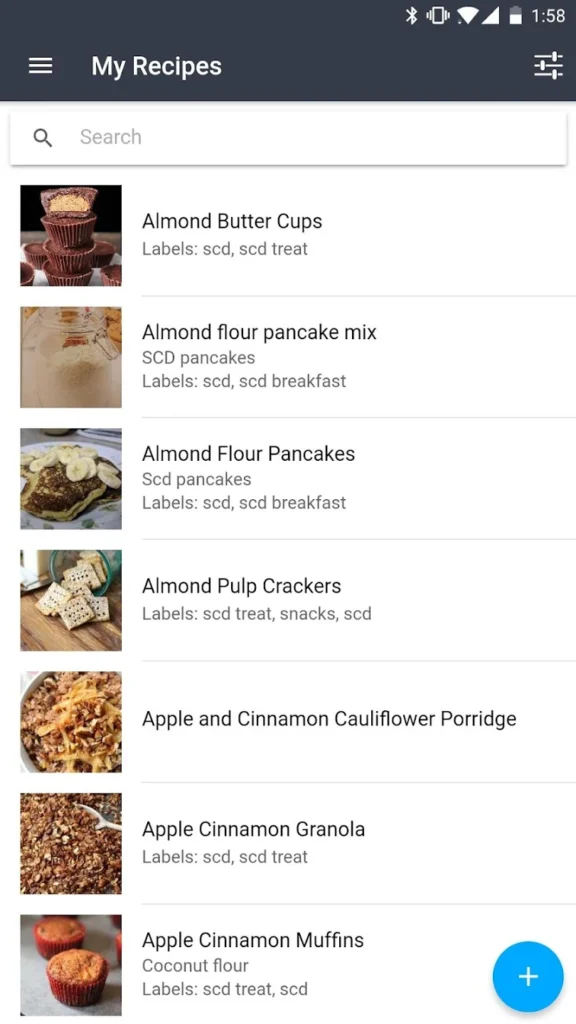
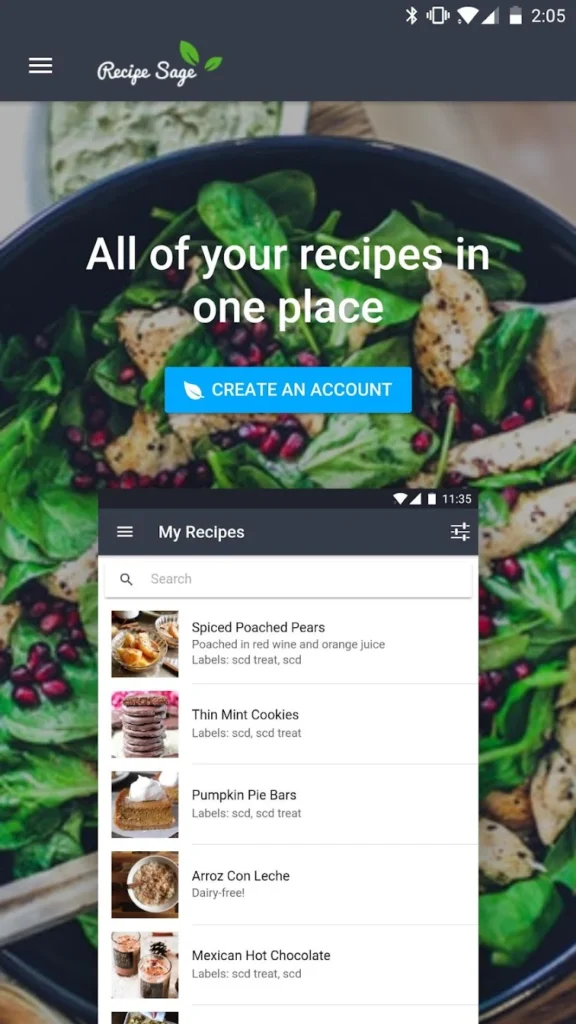
Key Highlights:
- Save recipes by entering any webpage URL
- Tagging and categorization for organization
- Drag-and-drop meal planner
- Categorized shopping lists with ingredient grouping
- Web, iOS, and Android access
- Free to use, open source, donation-supported
Who it’s best for:
- Users seeking a web-based and multi-platform recipe manager
- People who want to import recipes from any URL
- Those looking for open source or donation-based software
- Individuals who plan meals and grocery lists digitally
- Users migrating from other recipe apps
Contact Information:
- App store: apps.apple.com/us/app/sage-ai-recipes-lists
- Google Play: play.google.com/store/apps
- Website: cookwithsage.com
- Email: contact@cookwithsage.com

8. Flavorish
Flavorish is a recipe organization app available on iOS, Android, and the web. It allows users to collect recipes from social media platforms such as Instagram, Facebook, TikTok, and YouTube, as well as from websites, handwritten notes, and cookbooks. Recipes can be imported by sharing links or uploading images, which the app processes into digital entries.
In addition to recipe storage, Flavorish includes features for grocery list generation and custom recipe collections. Users can create lists based on recipes or from scratch, with sorting by aisle or recipe. AI-assisted tools are also available, including recipe suggestions based on user input and preferences. The app offers both a free and a premium version, with cloud syncing supported across all devices.
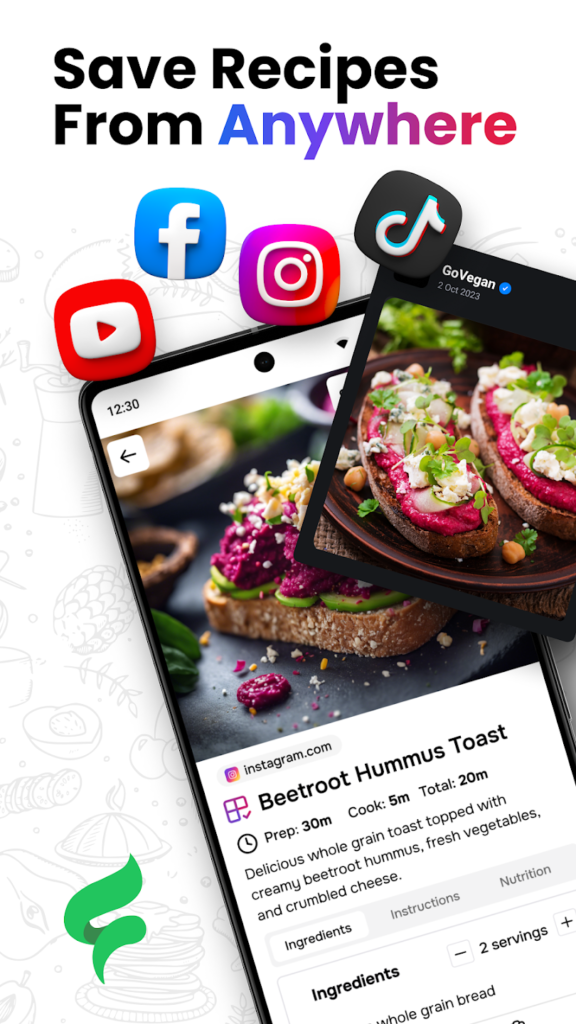
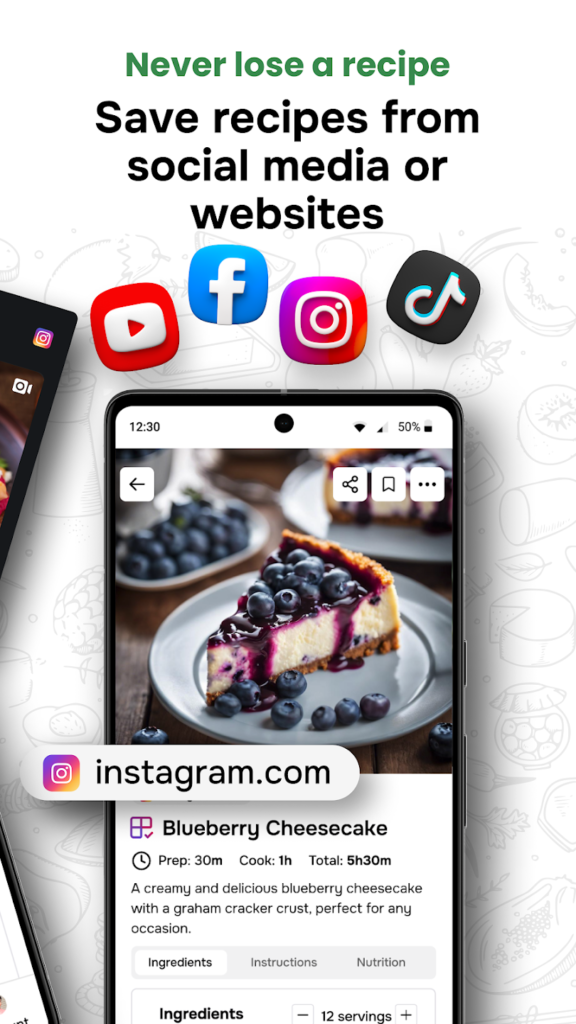
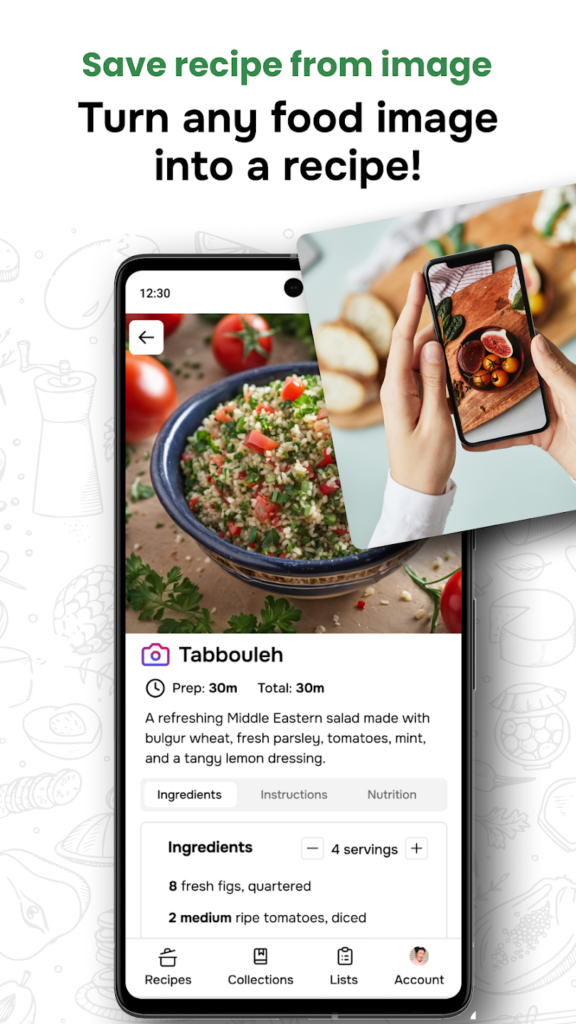
Key Highlights:
- Save recipes from websites and social media (Instagram, Facebook, TikTok, YouTube)
- Import handwritten or printed recipes through image uploads
- Generate and organize grocery lists by aisle or recipe
- AI-generated recipe suggestions based on dietary input
- Available on iOS, Android, and web
- Supports unlimited devices with cloud sync
Who it’s best for:
- Users who find recipes across multiple platforms and formats
- Individuals interested in organizing recipes and grocery lists digitally
- Those exploring AI-based cooking tools and suggestions
- People using mobile and web platforms for cooking and meal prep
- Users who want to create custom collections of saved recipes
Contact Information:
- Website: www.flavorish.ai
- App store: apps.apple.com/us/app/flavorish-save-any-recipe
- Google Play: play.google.com/store/apps
- YouTube: www.youtube.com/channel
- Tik-Tok: www.tiktok.com/@flavorish.ai
- Instagram: www.instagram.com/flavorish.ai
- LinkedIn: ca.linkedin.com/company/flavorish
- Facebook: www.facebook.com/flavorishai

9. ChefTap
ChefTap is a recipe organizer and grocery list app that supports saving recipes from websites and blogs into a personal digital collection. The app’s built-in clipper extracts recipes from English-language websites and supports limited use with non-English sites. Recipes can be stored and accessed through Android, iOS, and web apps, with syncing available across devices.
The platform allows users to edit saved recipes, add personal notes or images, and organize entries using tags and search tools. Additional features include smart grocery lists, which automatically categorize items, and tools for managing pantry inventory. ChefTap also provides a recipe-scaling function and a cooking interface with adjustable font sizes and screen display settings.
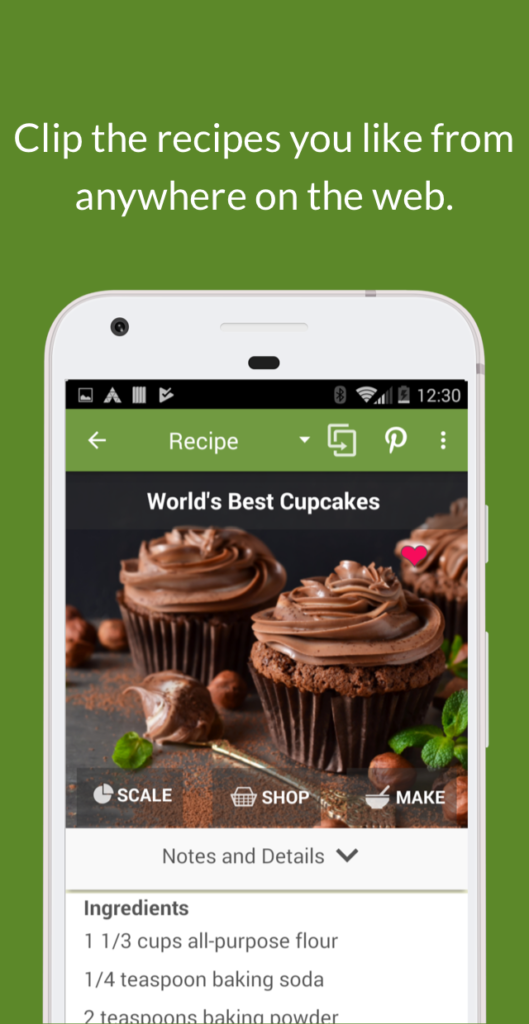
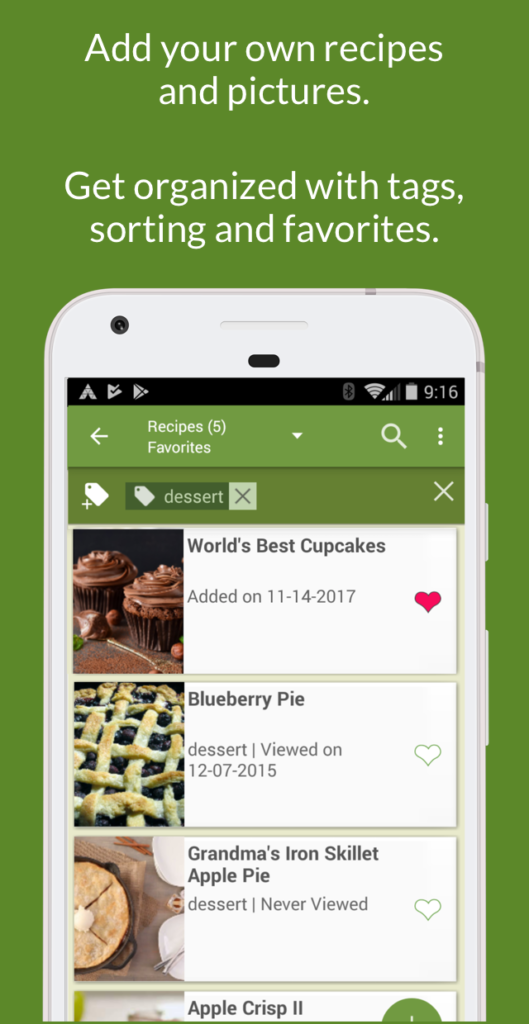
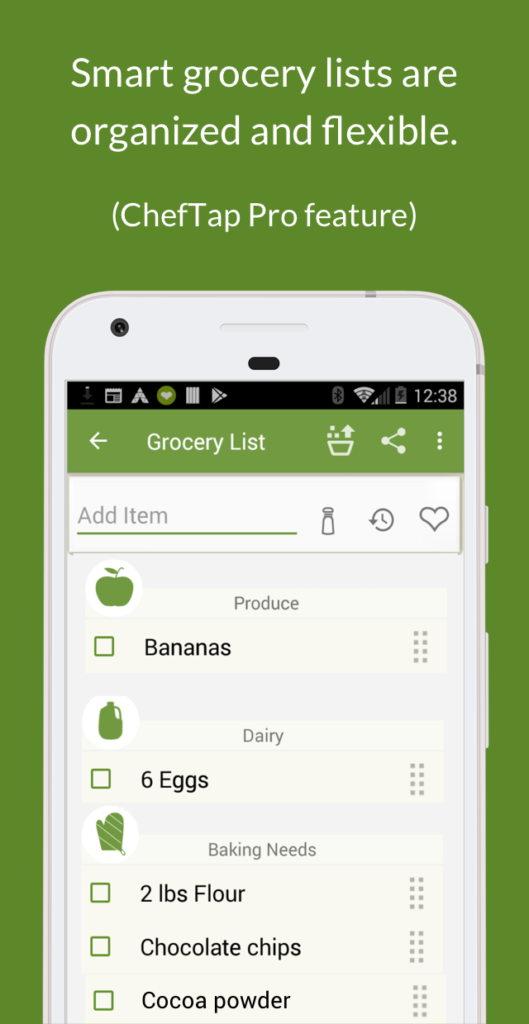
Key Highlights:
- Save recipes from blogs and websites using a built-in clipper
- Supports offline access via mobile and desktop apps
- Tagging, sorting, and cloning tools for recipe organization
- Grocery list feature with aisle-based categorization
- Pantry tracker and recipe scaling options
- Available on Android, iOS, and web
Who it’s best for:
- Users who save recipes from various online sources
- Home cooks managing their own digital cookbook
- People who want to sync recipes across devices and access them offline
- Individuals creating and organizing shopping lists from saved recipes
- Users looking for an editable and customizable recipe collection
Contact Information:
- Google Play: play.google.com/store/apps
- Website: cheftap.com
- Facebook: www.facebook.com/ChefTap
- Email: cheftap.com

10. BigOven
BigOven is a cooking and recipe app that provides access to a large online recipe database while also offering tools for organizing personal recipes, planning meals, and managing grocery lists. Users can search and save recipes directly from the BigOven site or import them from external websites using the BigOven Clipper tool. Recipes can be categorized and stored in a personalized collection.
The app includes additional features such as a meal planner, grocery list builder, and a tool for using up leftovers by entering available ingredients. BigOven also offers editorial content, seasonal collections, and video recipes. The platform is accessible via web, iOS, and Android, and includes social integration through platforms like Pinterest, Instagram, and TikTok.
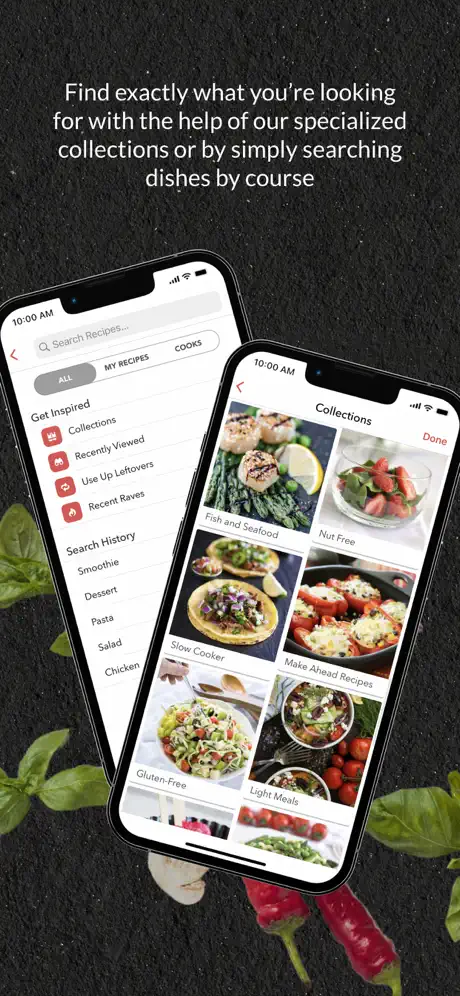
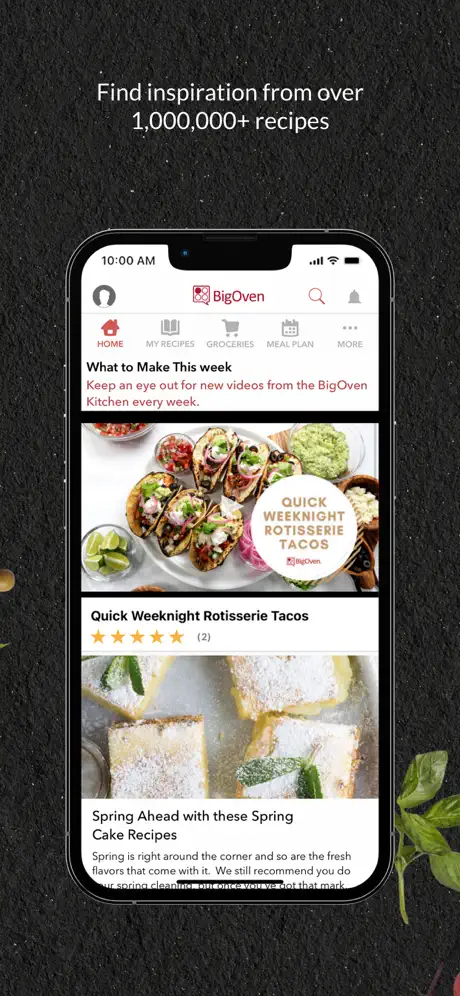
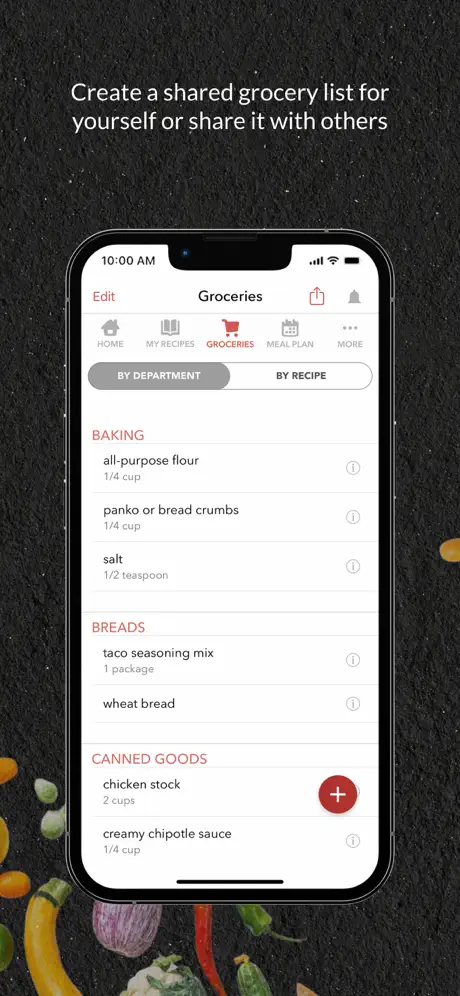
Key Highlights:
- Access to a searchable recipe database
- Save and organize personal recipes
- Import recipes from external websites using BigOven Clipper
- Meal planning and grocery list tools
- Content includes seasonal ideas, cooking guides, and videos
- Available on web, iOS, and Android
Who it’s best for:
- Users looking to combine recipe discovery with personal meal planning
- People who want to save recipes from blogs and websites
- Home cooks seeking a structured system for weekly meal prep
- Individuals using web or mobile devices for cooking and organization
Contact Information:
- Website: www.bigoven.com
- App store: apps.apple.com/us/app/bigoven-350-000-recipes-grocery
- Google Play: play.google.com/store/apps
- Instagram: www.instagram.com/bigoven
- Pinterest: www.pinterest.com/bigoven
- Tik-Tok: www.tiktok.com/@bigovenkitchen
- YouTube: www.youtube.com/c/bigoven
- Facebook: www.facebook.com/bigoven

11. Dish Dish
Dish Dish is a web-based and mobile app for organizing, storing, and sharing personal recipes. It allows users to build a digital recipe box by manually adding their own recipes or importing them from websites using an online recipe import tool. Recipes can be categorized by cuisine, dietary needs, or tags, and users have the option to keep entries private or share them publicly or with friends.
The platform includes features for generating grocery lists, adjusting ingredient quantities based on serving sizes, and accessing saved recipes across devices. Users can also view recipes shared by friends and family within the platform and compile personalized digital cookbooks. Dish Dish is available via web and mobile app with account-based access.


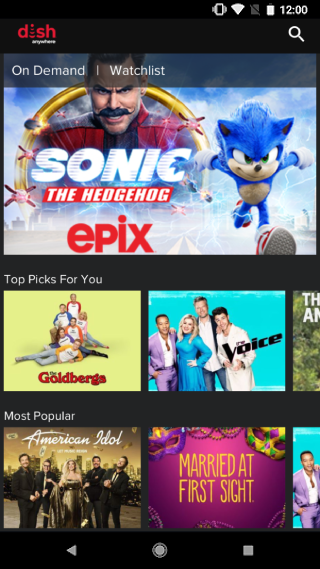
Key Highlights:
- Import recipes from the web with a built-in tool
- Create private or shareable digital cookbooks
- Adjust serving sizes with automatic recalculation
- Grocery list feature accessible across devices
- View and save recipes from friends and family
- Available via web and mobile app
Who it’s best for:
- Users transitioning from paper recipes to digital storage
- People interested in building a custom recipe collection
- Families and friends who want to share recipes online
- Cooks who need serving-size adjustments and list-making tools
- Those using both desktop and mobile devices for recipe access
Contact Information:
- Google Play: play.google.com/store/apps
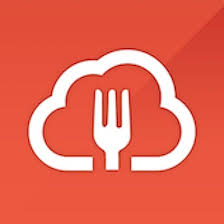
12. RecipeCloud
RecipeCloud is a digital platform for discovering, saving, and organizing recipes. Users can import recipes from websites, add their own manually, or browse through a searchable database of user-submitted and curated recipes. Recipes can be categorized and stored in custom cookbooks, which users can choose to keep private or share publicly.
The app includes a meal planner that supports drag-and-drop scheduling, along with a grocery list feature that converts saved recipes into shopping lists. RecipeCloud is accessible via iOS and web, with syncing across devices for consistent access to stored content. Additional features include a blog with kitchen tips and seasonal meal ideas.

Key Highlights:
- Import recipes from websites or add custom entries manually
- Organize recipes into private or public cookbooks
- Weekly meal planner with drag-and-drop functionality
- Grocery list builder tied to saved recipes
- Sync across iPhone, iPad, and web app
- Access to a searchable recipe collection
Who it’s best for:
- Users collecting recipes from various online sources
- People planning weekly meals and grocery shopping
- Individuals building a personalized digital recipe library
- Those who prefer visual organization with cookbooks and categories
- iOS and web users seeking multi-device syncing
Contact Information:
- Website: recipecloudapp.com
- App store: apps.apple.com/us/app/recipecloud
- Instagram: www.instagram.com/recipecloud
- Pinterest: www.pinterest.com/recipecloud
- Facebook: www.facebook.com/RecipeCloudApp

13. Umami
Umami is a mobile recipe manager available for iOS and Android that allows users to collect, organize, and share recipes. Recipes can be saved from any website using the app’s built-in browser or through the Chrome extension on desktop. Only the relevant recipe content is stored, removing unrelated webpage elements.
Users can tag recipes with custom labels, such as “Vegetarian” or “Dessert,” and organize their collection accordingly. The app also includes interactive features for cooking, such as step-by-step instructions and ingredient checklists. Recipes can be exported in various formats, including PDF, markdown, HTML, plain text, or JSON. The platform supports collaborative use for sharing recipes with family or friends and offers online access and syncing.

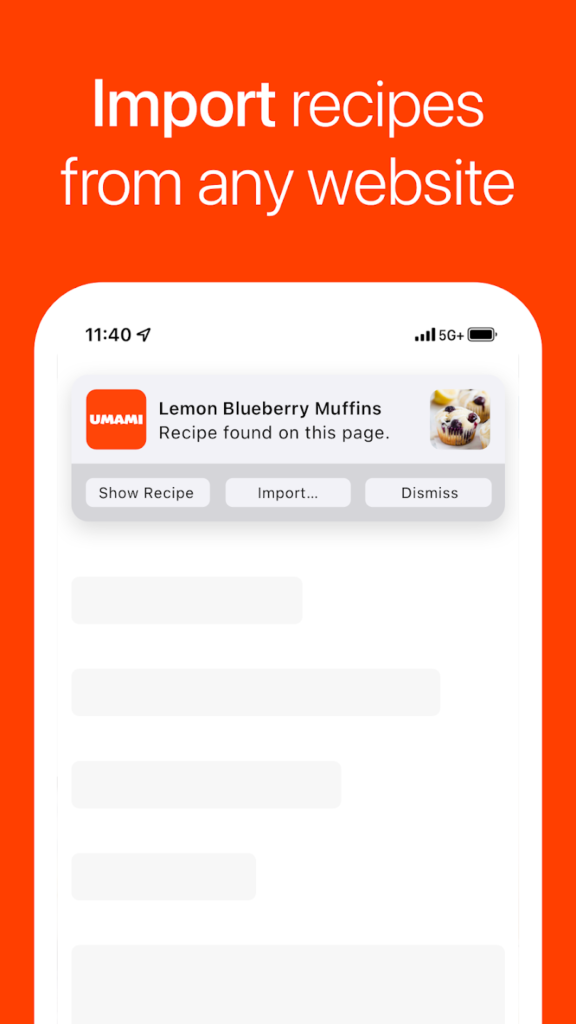

Key Highlights:
- Save recipes from websites via in-app browser or Chrome extension
- Organize recipes using custom tags
- Interactive cooking mode with step-by-step instructions
- Export recipes in multiple formats (PDF, markdown, etc.)
- Collaborative recipe sharing options
- Available on iOS and Android, with web access
Who it’s best for:
- Mobile users looking for a clean way to store and manage recipes
- People who want to save recipes from websites without clutter
- Cooks who need structured, step-by-step instructions while preparing meals
- Users interested in exporting and sharing digital recipes
- Families or groups looking to share and organize meals together
Contact Information:
- App store: apps.apple.com/app/umami-recipes
- Google Play: play.google.com/store/apps
- Website: www.umami.recipes

14. Saffron
Saffron is a recipe organizer app available on iOS, Android, and web. It allows users to save recipes from websites by importing only the core content, removing unrelated text or ads. Users can also enter recipes manually using a structured form. Saved recipes can be edited to adjust ingredients, add steps, or include personal notes, and collections can be organized into custom cookbooks with searchable sections.
The platform includes a meal planning tool that lets users schedule recipes over time and generate grocery lists based on planned meals. All content is stored in the cloud and accessible across devices. A free version supports up to 25 saved recipes, while paid plans expand storage limits and include features geared toward larger collections or content creators.

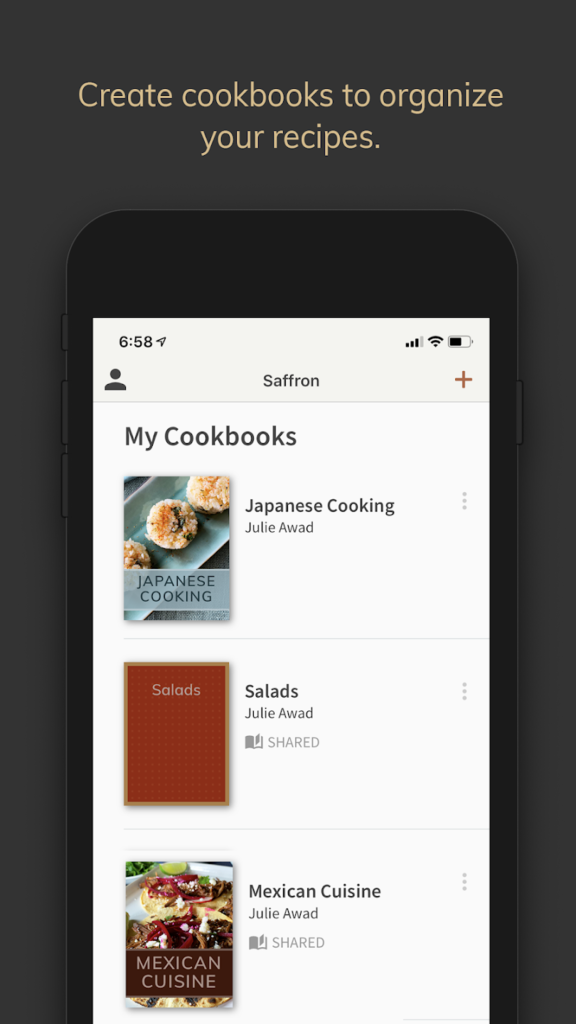

Key Highlights:
- Import recipes from websites or add them manually
- Edit and customize saved recipes
- Organize recipes into cookbooks with searchable sections
- Meal planner and grocery list generator
- Access via web, iOS, and Android with cloud sync
- Free and paid plans with different recipe limits
Who it’s best for:
- Users looking for a clean way to store recipes without web clutter
- Cooks who want to edit and personalize saved recipes
- People planning meals and grocery shopping in one place
- Those using multiple devices to access their recipe collection
- Individuals managing small or large recipe collections with flexible plan options
Contact Information:
- App store: podcasts.apple.com/us/podcast/the-saffron-podcast
- Google Play: play.google.com/store/apps

15. Plan to Eat
Plan to Eat is a web and mobile app that combines recipe organization with meal planning and grocery list generation. Users can build a personal recipe library by manually adding recipes or using the recipe clipper tool to import them from websites. Recipes can be categorized, rated, and searched by keyword, ingredients, tags, or cooking methods. The app supports editing, serving adjustments, and nutritional information tracking.
Meal planning is integrated into a calendar interface where recipes can be scheduled daily or weekly. The platform also generates automated grocery lists based on selected meals. Plan to Eat offers features such as cooking view mode, recipe sharing, and import support from other apps. The service is subscription-based, with a free trial available.
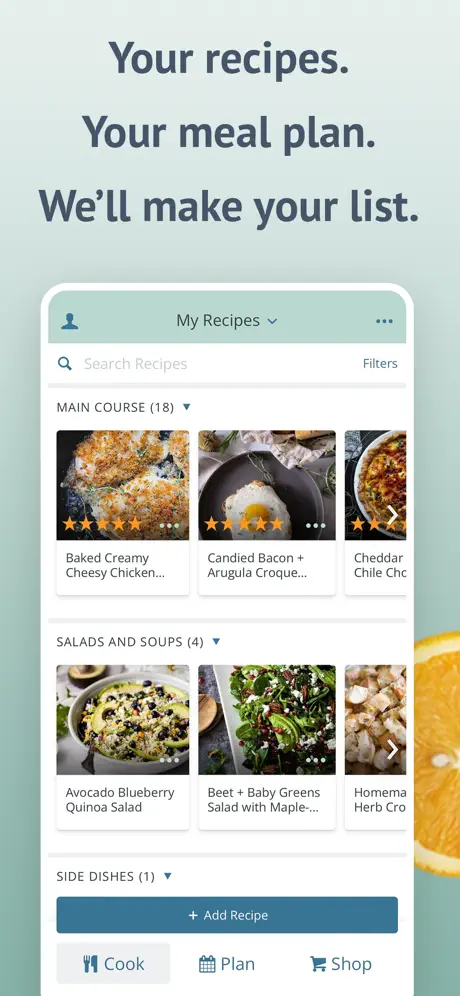
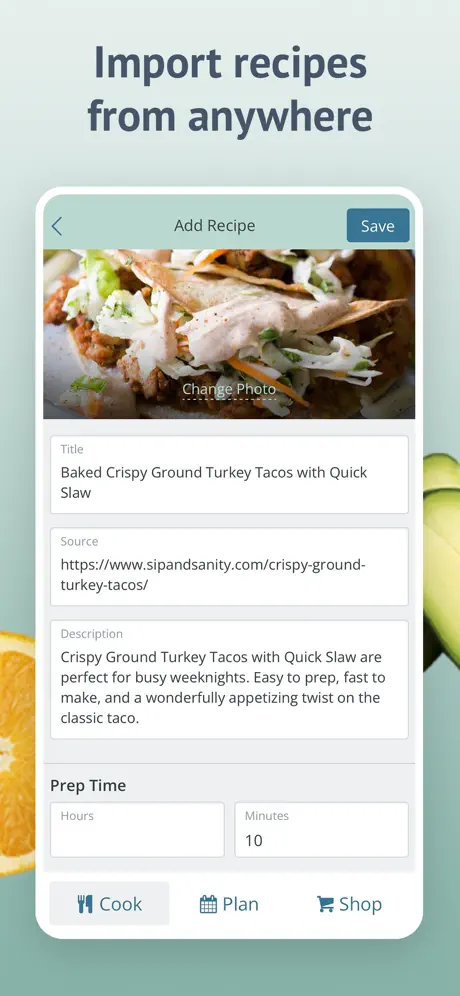
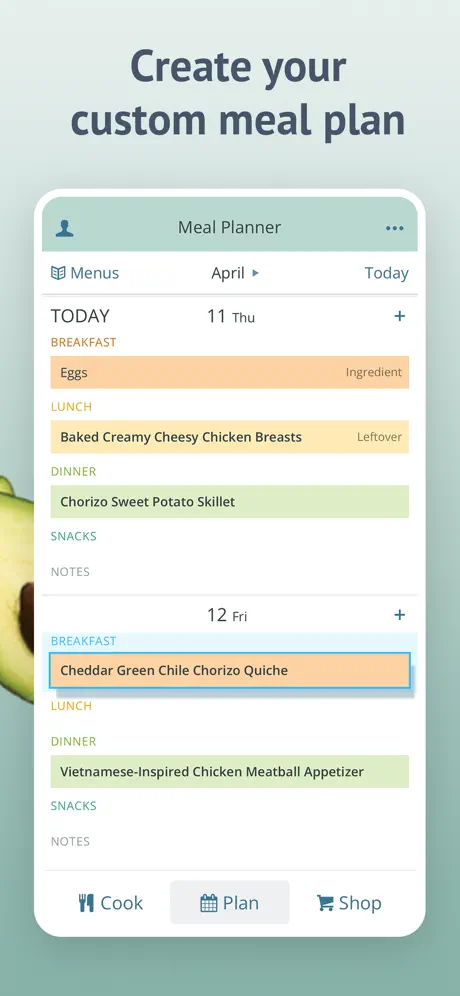
Key Highlights:
- Save recipes using a browser-based recipe clipper
- Organize and filter recipes by tags, course, ingredient, and more
- Calendar-based meal planning with drag-and-drop functionality
- Auto-generated shopping lists tied to selected recipes
- Nutritional info calculator and cooking view for mobile use
- Web and mobile app access with syncing
Who it’s best for:
- Users who want to combine recipe collection with meal planning
- People saving recipes from blogs and websites
- Families or individuals planning weekly meals and shopping trips
- Cooks looking for advanced filtering and search tools
- Users who value editable, custom recipe libraries with calendar tools
Contact Information:
- Website: www.plantoeat.com
- App store: apps.apple.com/us/app/plan-to-eat
- Google Play: play.google.com/store/apps
- Instagram: www.instagram.com/plantoeat_official
- Pinterest: www.pinterest.com/plantoeat
- Facebook: www.facebook.com/plantoeat
- Twitter: twitter.com/PlanToEat
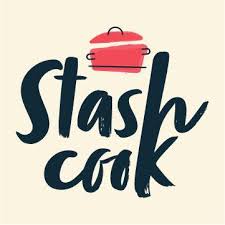
16. Stashcook
Stashcook is a mobile app focused on simplifying meal planning by allowing users to save recipes from websites and organize them into a digital cookbook. Recipes can be added manually or imported using the built-in web browser. The app supports drag-and-drop meal planning and shopping list creation based on saved recipes.
Users can adjust serving sizes, group recipes into custom collections, and share plans or lists with family members using sync features. Stashcook also provides nutritional analysis tools and print options for saved recipes. The app is available for iOS and includes automatic cloud backup for recipe content, meal plans, and lists.



Key Highlights:
- Save recipes from websites using the in-app browser
- Organize recipes into custom collections
- Meal planner with drag-and-drop scheduling
- Generate shopping lists directly from meal plans
- Adjust serving sizes and access nutritional analysis
- iOS app with online backup and family sync features
Who it’s best for:
- iOS users looking to plan meals using saved web recipes
- Families or households sharing a meal and grocery planning system
- Cooks who prefer visual organization and customizable collections
- Individuals wanting nutritional insights alongside meal prep
- People who want to maintain a digital cookbook with printing options
Contact Information:
- App store: apps.apple.com/us/app/stashcook-recipe-keeper-pro
- Google Play: play.google.com/store/apps
- Website: stashcook.com
- Twitter: twitter.com/stash_cook
- Facebook: www.facebook.com/stashcook
- Instagram: www.instagram.com/stashcook
- YouTube: www.youtube.com/channel

17. Cook’n
Cook’n is a multi-platform recipe organizer that allows users to save, edit, and manage recipes across mobile, desktop, and smart home devices. Recipes can be added manually, imported from websites, scanned from books, or uploaded via screenshots and PDFs. The app includes a built-in meal planner and shopping list generator, both of which sync across devices, including Apple Watch and Amazon Alexa.
Users can categorize, rate, and search recipes using filters like name, ingredient, or tags. Cook’n also supports personalized AI-based recipe recommendations and community sharing features, enabling users to exchange and explore trending recipes. Additional tools include nutritional info, serving size adjustments, smart folders, and cookbook creation for print or digital use.
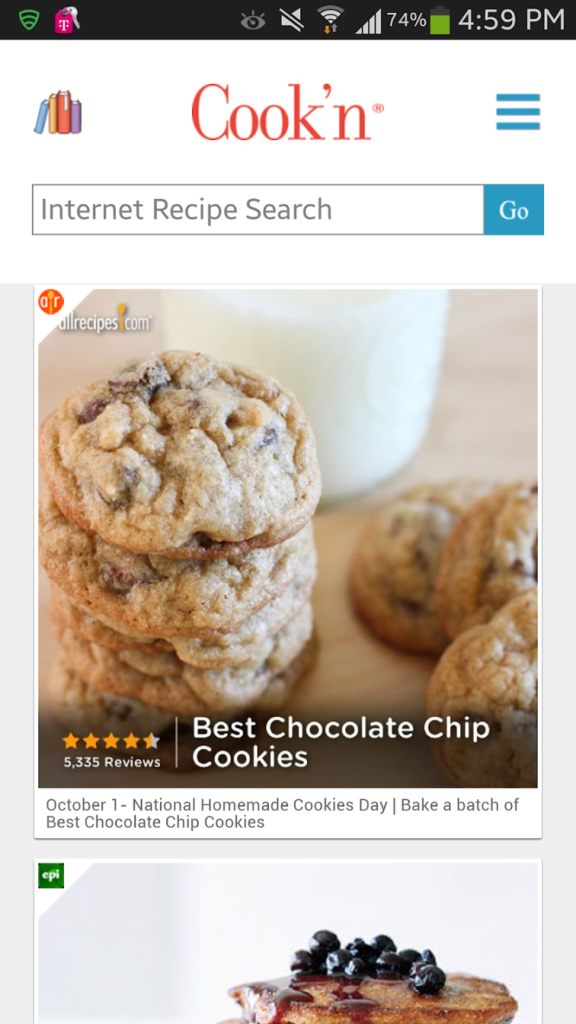

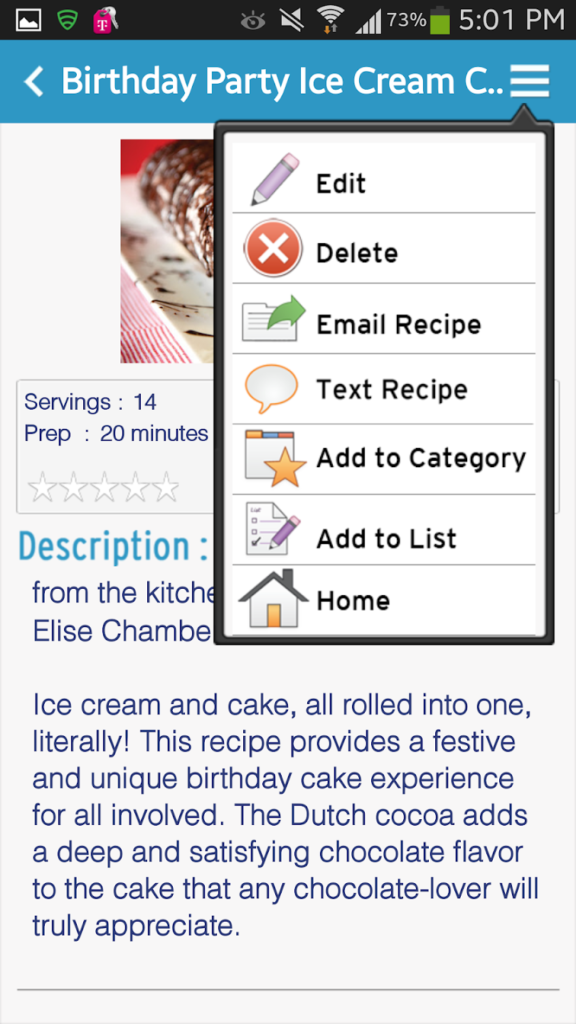
Key Highlights:
- Supports recipe import from websites, Pinterest, screenshots, or OCR scans
- Meal planning with drag-and-drop and automated shopping list generation
- Available on iOS, Android, Windows, macOS, Apple Watch, and Alexa
- Syncs recipes, lists, and plans across all devices
- Community features for sharing and discovering trending recipes
- Cookbook creation for printing or digital sharing
Who it’s best for:
- Users who want a cross-platform recipe manager with full device integration
- Individuals looking to digitize handwritten or physical recipes
- Families sharing shopping lists and meal plans across multiple users
- Cooks who want advanced filtering, organization, and printing options
Contact Information:
- Website: www.dvo.com
- App store: apps.apple.com/us/app/cookn-recipe-organizer
- Google Play: play.google.com/store/apps
Conclusion
Finding a reliable way to save recipes from the web can make a big difference in how you cook and plan your meals. Whether you’re pulling ideas from food blogs, Pinterest, or your favorite cooking sites, having a tool that keeps everything in one place saves time and helps you stay organized.
From apps that focus on simple bookmarking to those that offer full meal planning and grocery list features, there’s something out there for every kind of home cook. Some tools make it easy to stash recipes with just one click, while others let you build entire cookbooks, plan weekly meals, or collaborate with family.
In the end, the best app is the one that fits how you cook and what you need whether that’s syncing across devices, importing handwritten recipes, or just keeping things neat and searchable. Try a few, see which one clicks, and build a digital recipe box that actually works for you.
